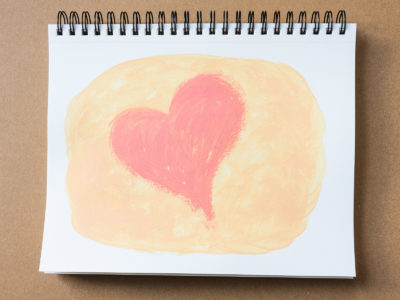If you’re not used to listening to your heart, it can seem like a real mystery. Or at least it did to me.
Sometime after I entered my 30s, I became deeply despondent about life. I was struggling with the dual challenges of being unhappily single and hating my job and couldn’t understand how things could be going so badly for me. It seemed like there was something I was missing.
As an antidote, I started taking yoga classes at my gym and heard a lot of talk about heart opening. Certain poses are designed to stretch and expand your chest, and they are called heart openers. Considering how much I disliked all heart opening poses, I wondered if the source of my troubles was a closed heart.
I found a Deepak Chopra heart opening meditation and did that for a while. It mostly put me to sleep, though, and didn’t seem to make any difference. I thought about working on my heart openers at home, but have you ever tried fish pose, or ugh, camel? Those are the worst poses for me, which might lead you to say, “Well, there’s your answer. Learn to love fish pose, and you’ll find a husband.”
But, no, that was not my answer. Instead, I dropped the pursuit of heart opening altogether; probably because I found a boyfriend and kept him for many years, no fish pose required.
Later, after the boyfriend and I parted ways, I decided my life needed some decluttering and in walked Marie Kondo and her book, The Life-Changing Magic of Tidying Up. I’ve never watched her on TV, but I found her whole manner of writing about tidying so charming, I followed her method for almost every item I owned. (I stopped at the section on sentimental items.)
If you don’t already know the process, it’s simple:
“. . . take each item in [your] hand and ask: “Does this spark joy?” If it does, keep it. If not, dispose of it. . . .
“When you touch a piece of clothing, your body reacts. Its response to each item is different. . . .
“Keep only those things that speak to your heart. Then take the plunge and discard all the rest.”
Marie Kondo
It took me months to go through every item I owned, but I quickly realized Marie Kondo was right – the body reacts. My heart was giving me clear signals about what to keep and what to discard. Sometimes it jumped for joy, or made me smile. Other times it gave me full-bodied yes or no responses.
And then I started sorting the tools. Turns out, my heart doesn’t care very much about hammers, but it did have answers for me. They were more like a simple knowing, “This hammer is useful; I like it. Keep this one, not that one.”
While it was nice to have a less cluttered living space (and fewer hammers) when I was done, the bigger benefit was knowing:
My heart was not closed! It was sending me very clear signals – I just wasn’t listening to them.
Once I understood the way my heart responded to the physical items in my home, I started consulting it for other decisions, too. When you trust your body’s responses, you can use your imagination to think of situations coming up and find out your heart’s preferences. Do I want to paint my room blue or yellow? Attend this event or stay home? Take this job or that one? You get the idea.
If you’re looking for a new way to navigate life, I highly recommend trying this process. When I realized how awful my heart’s no responses felt – the slumping shoulders, the scrunched-up face, the head-shaking “No, I never want to wear that itchy sweater again” – I couldn’t imagine how I had lived for so long without seriously consulting it.
Sometimes I wonder how different my life might be if I had listened to my heart earlier; so many of my life choices made sense and seemed responsible but didn’t spark any joy whatsoever. But then I think the whole point of the difficult times was to make me look for what I was missing.
It’s amusing to me now that yoga and Deepak Chopra couldn’t help me solve the mystery of my heart, but a simple book on tidying cleared it all up. Life is funny that way.

 What If There Isn’t Anything Wrong With You?
What If There Isn’t Anything Wrong With You?